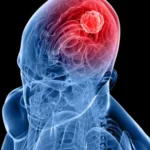
Cocaine is a substance whose consumption produces very powerful physical, psychological and social wear on those who fall into a dynamic of dependence and drug addiction. It is not only that the entry into the body of this drug generates damage to the body; In addition, it causes the person to internalize a series of habits and behavioral patterns that make the problem increasingly worse, making cocaine use the main incentive offered by daily life.
Luckily, from psychology there are several tools that allow us to overcome addiction, and among them, cognitive-behavioral therapy stands out. In this article we will see How psychological intervention based on the cognitive-behavioral approach is used in cocaine addiction.
The characteristics of cocaine addiction
Among illegal hard drugs, cocaine is the most consumed worldwide. This is partly because, Despite being sold clandestinely, its consumption is relatively frequent. not only in lower classes but also in middle and upper classes, and furthermore, it is not only used in leisure contexts and party nights, but is also consumed in contexts linked to work and professional activity in general (due to its stimulating effects). . On the other hand, unlike what happens with cannabis, it has a base of regular consumers that is not limited almost exclusively to young people.
But the fact that it is such a popular drug does not imply, by any means, that its harmful effects on the body and behavior are insignificant. This substance crosses the blood-brain barrier after circulating through the bloodstream and, from there, passes to the central nervous system.
There It mainly affects the neurons of the ventral tegmental area and, from there, it greatly influences the nucleus accumbens., a part of the brain that is part of the so-called reward system, which is capable of generating the experience of gratification that leads us to want to repeat certain actions to relive the pleasant consequences they produce. Specifically, cocaine causes, while it is present in the body, the neuron cells of the nucleus accumbens to be more exposed to dopamine, a neurotransmitter known to enhance brain activation.
But this is not the only way in which cocaine alters the functioning of the body, and the different ramifications of the “domino effect” produced by the entry of the drug into the body are very varied and complex, and are unique depending on the person. of which it is concerned. Thus, this drug has multiple “side effects”; some of them are relatively common in all people who take it, and others are unexpected.
Among the symptoms and harmful effects of cocaine use that commonly occur, the following should be highlighted:
Cocaine intoxication It can lead to anything from erratic and uncontrolled behavior in relatively mild cases, to death from cardiac arrest in the most serious cases.
In addition to this, cocaine damages the digestive system if consumed orally, and the respiratory system if smoked or inhaled.

This is the cognitive-behavioral approach in the treatment of cocaine addiction
The cognitive-behavioral approach is based on the idea that to promote the appearance of changes for the better in people’s quality of life, it is important act both in their way of interacting with their environment through observable actions, and in their way of managing their internal psychological processes. That is, cognitive-behavioral therapy acts through two main ways: modifying ways of behaving objectively, and modifying ways of interpreting the world, holding beliefs and ideas, and managing emotions.
The main characteristics of this type of therapy used for patients addicted to cocaine are the following.
1. Psychoeducation
Especially in the initial phase of cognitive-behavioral therapy, psychoeducation is frequently carried out, explaining in a didactic way everything there is to know about the disorder one suffers from. This is important so that the patient understands all the implications of what is happening to him, and knows that he can move on.
2. Detection of problematic behavior patterns
To confront the problem of cocaine addiction, you must understand its fundamental parts, and know how to distinguish them in everyday life to quickly recognize them when they occur. Much of these psychological elements that “feed” the addiction and keep it functioning are ways of relating to others and relating to the environment.
In this part of the therapy, the patient is helped to reflect on his life and recognize certain routines and habits as problematic, such as always keeping a supply of drugs in the drawer of the desk where he works, or keeping a card in his wallet. of expired credit just to get cocaine streaks.
3. Detection of problematic internal psychological processes
These can be divided into two groups: beliefs that reinforce the presence of the addiction in the patient’s daily life, and thoughts and emotions that trigger cocaine consumption at the moment they emerge in consciousness (or that increase the risk of relapse).
- Related article: “Self-knowledge: definition and 8 tips to improve it”
4. Help the patient improve their self-esteem and self-efficacy
Strengthen the patient’s ability to respect themselves and value their achievements It is essential for them to get involved in the process and not give up, as well as for them to feel satisfaction from the goals achieved and these serve as a motivating element (otherwise, I would attribute these achievements to luck or the influence of other people). Therefore, in psychotherapy, strategies are applied to reinforce self-esteem and self-efficacy, the latter being the ability to have a realistic notion of what oneself can achieve.
- You may be interested: “Do you really know what self-esteem is?”
5. Create a routine plan with incentives other than drugs
On the other hand, in cognitive-behavioral therapy, a personalized plan of new routines and habits is created, which allows the patient to have new sources of satisfaction and motivation not only outside of cocaine consumption, but also outside of the social contexts in which everything revolves around drugs.
6. Support for managing emotions
During the process of leaving cocaine behind and facing a new way of living, it is normal for new fears to arise, a feeling of guilt for looking back at the uncontrolled life one has led, etc. Therefore, psychologists They help patients adequately manage these feelings and emotions, without letting them become obstacles. and increase the risk of relapse.
- Related article: “What is Emotional Intelligence?”
7. Support for establishing personal relationships
Relationships or others are a fundamental dimension to overcome addictions. If the person feels very alone, they will be much more exposed to the possibility of relapse. And in the same way, many people find it difficult to try to make friends or find a partner because they do not know what and how to explain about their lives with drug use.
Are you looking for treatment for drug addiction?
If you are currently looking for treatment options for addiction to cocaine or other drugs, contact our team of health professionals.
In Llaurant la Llum We work from medicine and psychotherapy to accompany all patients through all stages of overcoming addictive disorders, from detoxification to rehabilitation and reintegration. In addition, we offer the possibility of carrying out residential treatment in short or long-stay programs in our fully equipped facilities. You will find us in Picassent, Valencia.








